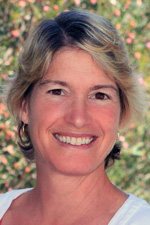By Eva Trieger

SOLANA BEACH, California — The 1930s clearly marked one of the bleakest periods in European history and more pointedly in Jewish history. As Nazis gained momentum and attempted a mass extermination of this small segment of Europe’s population, two young men in Cleveland, dreamed up an antidote to the sense of impotence and despair. Out of the minds and pens of Joe Shuster and Jerry Siegel, “Superman” came to life and off the page to rescue the victimized underdogs.
As the country observed Yom Hashoah, Remembrace Day of the Holocaust, staged readings, including The Hstory of Invulnerability at the North Coast Rep, were held to mark this horrific period, and celebrate the great courage and creativity of Jews who grew up in the wake of Hitler’s tidal wave.
Arnold Mittleman and daughter, Justine Shayman. amassed 600 Jewish plays for this project and were successful in engaging La Jolla Playhouse, The Globe, North Coast Rep and many other area theaters to mark this day and honor the heroes who scribed our past and prologue.
David Bar Katz’ play relates the true story of Jerry Siegel and Joe Shuster, creators of The Man of Steel, aka Superman, aka Kal-el, (Hebrew for “Voice of G-d). The audience is privvy to the hopes, fears, successes and failures, both professional and personal, that these men experience. Through his fantasy and imagination, and perhaps his need to overcome his own helplessness as an American Jew, Siegel has given birth to the superhero that is impervious to any manner of attack.
Before an audience of 65 people, six versatile actors took on a multitude of roles and accents to deliver this complex drama. Most of them were well known and respected artists, including, Mark Pinter (Jerry), Christopher Williams (Superman), Ted Barton (Shuster), Andrew Barnicle (Jor-El), and Amanda Sutton (Lois Lane). One very talented youthful actor, Ari Zelkind, delivered a very strong performance as the Young Jerry, Joel and frequent narrator.
Much of the dialogue between Siegel and his “son”, Superman, focuses on the boy’s origin. Like so many vanquishers of the day, Superman’s parents, and creators, are Jewish. Also, like so many of his contemporaries, all are orphaned, “nerds by day”, bespectacled, and provide a monstrous threat to their evil enemies. Siegel has dreamed up a fearsome figure in Superman as a combination of “Popeye, Tarzan, Zoro and Sampson.” And though Siegel says he was never bar mitzvahed and did not attend synagogue on the high holy days, he makes multiple references to Sampson’s might and wisdom, belying his connection to his own Jewish identity.
The author writes that in 1938, the concept of the Invulnerable Man was necessary, In fact, he stated that Superman comics and paraphernalia were more prevalent than any other cartoon figure, and the entire industry was booming. “More children have read Superman than the Bible.” Clearly The Man of Steel did not only hold appeal for Jews, but just as certainly, the young Joel, in the Nazi camps of Birkenau and Auschwitz believed in his hero’s redemption.
A crushing blow to Siegel and Shuster was the abject theft of their brainchild. They were bought out for a measly $130 when Harry Donnenfeld bought all rights to Superman. He allowed them only the comic strip and censored the content. Superman was not allowed to become political, and could not fight the Nazis or confront Hitler until 1941.
Bar Katz’ play has a brief respite from the heavy pall, when Siegel enjoys a comeback and garners public support after “forty years of silence.” Sadly, it is short lived and Siegel died before reconciling with his son, Michael. His closing lines speak of his desire to be “like Sampson….to bring honey to his father’s lips.” It is a remarkably sad story of a man who was largely unrecognized for creating an American icon that became globally accepted and loved. Siegel never received the accolades nor the deserved acknowledgment for his creation of a beacon of hope and goodness that his Jewish Superman, aka The Man of Steel, aka Ubermensch, aka Kal-el provided during the Holocaust, the darkest of days.
*
Trieger is a freelance writer who specializes in coverage of the arts. You may comment to her at eva.trieger@sdjewishworld.com, or post your comment on this website, providing the rules below are observed.
*
__________________________________________________________________
Care to comment? We require the following information on any letter for publication: 1) Your full name 2) Your city and state (or country) of residence. Letters lacking such information will be automatically deleted. San Diego Jewish World is intended as a forum for the entire Jewish community, whatever your political leanings. Letters may be posted below provided they are responsive to the article that prompted them, and civil in their tone. Ad hominem attacks against any religion, country, gender, race, sexual orientation, or physical disability will not be considered for publication. There is a limit of one letter per writer on any given day.
__________________________________________________________________
Editor’s Note: Our thanks to reader Jerome Liner of Cincinnati, who pointed out that in our original version of this story, we mistakenly said that Siegel and Shuster were New York boys. In fact, they went to public school together in Cleveland, Ohio, as is now correctly reported above.